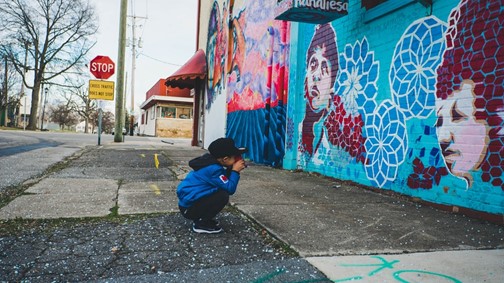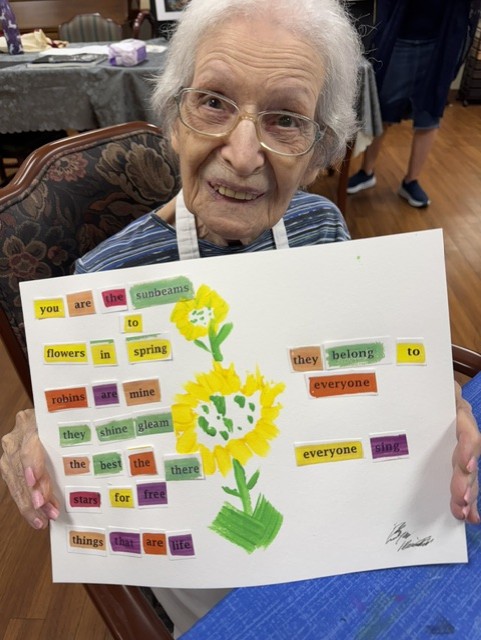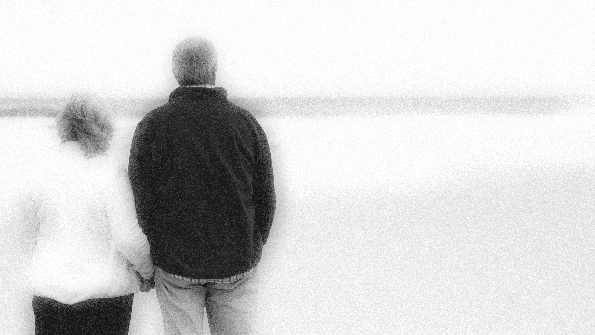When I was young, I knew most of the nooks and crannies of the Detroit Institute of Arts. Our family attended a large, downtown church and sometimes on Sunday afternoons we would visit the museum before going home. Maybe because of its association with “church,” the DIA seemed a sacred place and my memories of time spent there recall hushed voices, mystery, awe. I was drawn into the landscapes and scenes on view; I could imagine blocks of marble set free into sculptures full of life; I could almost hear the machines in Diego Rivera’s murals. Perhaps these early experiences led me to my first career in the museum world. At any rate, my own museum memories did inspire me to introduce my own children to the treasures within.
When we bloggers settled on the theme of “Art That Moves” for this Lenten time, a vivid memory came to me. Not of my own childhood, but out of my children’s early years.
Picture this:
A grey, early spring day in Chicago. Three generations of my family have spent the morning at the Museum of Science and Industry and we are heading to the Art Institute. But, we’re not all actually going to the Art Institute—the 4-year-old, his dad, and his grandpa are stopping there only briefly before the three of them go back to the hotel for a much-needed nap. The “girls” will find the Impressionists and return in time to join the nappers for dinner.
Somehow, my small son has learned that there are knights and armor and weapons on display. There is a chain-mail vest! And so, after we pay our admission, I take John’s hand and the two of us hurry to the gallery with the accoutrements of medieval war. The museum is crowded, and loud—no hushed voices on this spring break day.
When we arrive at the right gallery, we find a large hall ringed with display cases filled with, you guessed it, swords, axes, helmets, shields, and more. There really IS a chain-mail vest. There is armor meant for men and armor meant for horses. As lethal as these pieces are, they are also quite beautiful examples of superior craft. We move from one case to the next and examine the armor. We talk about what the pieces would be used for. We do marvel at their beauty.
After some time, I coax my son to the exit and we begin to make our way out of the gallery. As we approach the door we come around from behind a tall dividing wall that holds part of the armory. As my son moves around the wall to the front, he falls to his knees. I’m behind him, so I don’t see what has captured his attention for a few seconds. I wondered, was it a fallen knight, a pile of captured booty, a picture of a battle?
It’s so beautiful
My son was kneeling in front of a bas relief of the nativity, the holy mother and baby.
I leaned down, and as I did so, he turned and whispered to me—in a hushed voice: “It’s just so beautiful.”
This is perhaps my most treasured memory of my children’s childhood. It truly captures my son’s personality; he is an extrovert, played loudly with his friends, was a strong, dedicated athlete. And, he is also a musician, and a compassionate friend with a soft heart, he seeks out things of beauty.
When I remember this holy moment of childhood; recall my son’s position of reverence, I hear the music of “O Holy Night” demanding that we “fall on our knees.” The song compels us to allow our bodies to be moved by the beauty in life. A new baby, a gorgeous decorated helmet, a glossy sculpture, the breathtaking juxtaposition of life and death.
With the chaos of spring break tourism swirling around us, the hushed hallways of my own childhood asserted their presence. “It’s just so beautiful.”
View all articles by:






















